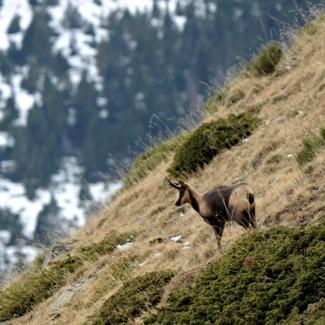Relationship between Mineral Levels and Health in Pyrenean Chamois

The mineral status of living beings has an impact on fertility, growth and disease, but in wildlife its importance is often underestimated. The Pyrenean chamois (Rupicapra pyrenaica) is a small mountain ungulate widely distributed in alpine and subalpine habitats in the Pyrenees that feeds predominantly on herbaceous plants.
We studied macro and trace mineral concentrations in liver samples from Pyrenean chamois and compared them with healthy and sick animals in the Catalan Pyrenees (NE Spain). After wet digestion, we determined sodium (Na), potassium (K), calcium (Ca), phosphorus (P), magnesium (Mg), sulfur (S), and iron (Fe) concentrations by inductively coupled plasma optical emission spectrometry (ICP-OES) and copper (Cu), zinc (Zn), and molybdenum (Mo) concentrations by inductively coupled plasma mass spectrometry (ICPMS).
We observed low hepatic concentrations of Cu in a considerable percentage of chamois, without evidences that these low concentrations increased their susceptibility to infectious diseases. Sick chamois had very similar percentage of animals with low concentration of Cu (<20 ppm DW) to the group of healthy chamois.
On the other hand, we observed that infectious diseases increased significantly the hepatic concentrations of Na, Ca, Mg, Fe and Zn, very likely, as a consequence of processes associated with the acute phase inflammatory response. In many protected areas worldwide, mineral blocks are used to increase the availability of minerals for wild ruminants. However, caution must be taken when implementing these management measures because the use of mineral mixtures can increase the encounters between wild animals and livestock increasing the risk of transmission of diseases between them.
The obtained values of liver mineral levels and their sources of variation, such as sex, age and disease, mostly fall within the range of those described for other ruminants, but possible deficiencies and differences between individuals and populations require further study.
References
Manent, Josep; Cuenca, Rafaela; López-Olvera, Jorge; Fernández-Sirera, Laura; Lavín, Santiago; Marco, Ignasi. Mineral Levels in Pyrenean Chamois (Rupicapra pirenaica). Biological Trace Element Research 157(3): 218-223. doi: 10.1007/s12011-014-9894-x.


